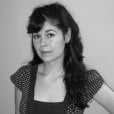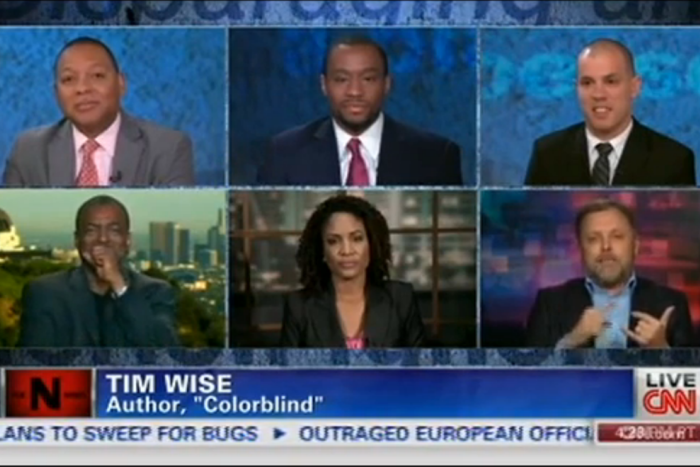Two years after Adbusters threw out a suggestion that whoever was ready for change should set up tents, kitchens, and barricades on Wall Street, the mystery of what the Occupy movement was/is all about (if you’re not sure what something is, it’s hard to tell whether or not it’s over) endures. Like engineering majors in a compulsory undergrad English course forced to read Beckett, we’re left with the impression that something important happened, but we’re not sure what. What have we learned? What were we supposed to learn? Did anything change?
People who love Beckett love Beckett in part because the plays aren’t straightforward; the ambiguity is central to the work’s aesthetic. It’s possible that we’re still talking about Occupy not despite, but because it’s so difficult to pin down. In his new book The Democracy Project: A History, A Crisis, A Movement, David Graeber, one of the initial organizers of Occupy Wall Street, recounts sitting in a bar in July of 2011 with a handful of other activists discussing what Occupy could or should be. An artist named Colleen Asper said, “Often the power of a work of art is precisely the fact that you’re not quite sure what it’s trying to say. What’s wrong with keeping the other side guessing?”
Productive ambiguity is the sweet spot of art, where the artist’s intentions and the audience’s needs meet. The artist is enlisting your help to determine how each of the work’s possible meanings contradict or support each other, and how the world the piece shows is different as a result. Sometimes it’s a question of two opposing meanings playing against each other, with the audience identifying at times with one, at times with another. In Langston Hughes’ “Ku Klux,” a white man at the head of a lynching crowd asks a black man, “Do you believe/ In the great white race?” The black man answers,
“Mister,
To tell you the truth,
I’d believe in anything
If you’d just turn me loose.” The white man asks, “Boy,
Can it be
You're a-standin’ there
A-sassin’ me?”
The reader can’t be sure whether the black man is mouthing off or not; there’s a suggestion that he is simply so scared he says the first thing that comes to mind. Is he brave or terrified? Is he speaking truth to power or knuckling under?
Chomsky argued that the ambiguity human language exhibits is a sign that it didn’t evolve for communication; he posited that language may have been primarily intended as a way to organize one’s thoughts, not to express them to others. But recent linguistic work argues that ambiguity is not a barrier to communication at all. In a 2012 article in the journal Cognition, researchers from MIT examine how ambiguity makes language more efficient. Imagine, they say, the most efficient language possible:
Speakers can minimize their effort if all meanings are expressed by one simple, maximally ambiguous word, say, ba. To express a meaning such as ‘‘The accordion box is too small,’’ the speaker would simply say ba. To say ‘‘It will rain next Wednesday,’’ the speaker would say ba. Such a system is very easy for speakers since they do not need to expend any effort thinking about or searching memory to retrieve the correct linguistic form to produce.
Of course, this language is only maximally efficient for the speaker; it’s the listener who has to figure out which ba is which. But, the linguists argue, we already expect the listener to do much of the conversational work. Understanding a word like “run” (which could mean a run in your pantyhose, a run in baseball, the verb “to run,” or a sequence) involves the listener making a correct inference about what the speaker means. It’s possible that the colour commentator at a baseball game is talking about a run in her stockings, but it’s unlikely. The listener understands language by evaluating context, not because of the speaker’s precision in usage.
Seen this way, a political movement like Occupy Wall Street doesn’t have to mean something in and of itself, or at least not just one thing. It acts like an ambiguous word, with the big political realities as context. The onus is on the listener/viewer/reader/bystander/participant to decide which conversation they’d like to be a part of, and interpret accordingly. For many of us, the act of interpretation itself is what makes a communication valuable. People love riddles because they challenge us to turn over a question until a shift in thinking suddenly produces an answer. Koans are used for Zen meditative practice because it’s the process itself that matters, rather than arriving at an answer.
Interpretations of what the Occupiers wanted have ranged from “handouts,” to “jobs,” to “reinstation of the 1933 Glass–Steagall Act prohibiting joint ownership of commercial and investment banks,” to “no one knows.” But the slogan that best sums up the movement may belong to Colleen Asper, the artist and initial organizer that Graeber mentions. In an article on the essay website The Weeklings, Jennifer Kabat wrote: “At Occupy Wall Street, Colleen Asper carried a blank placard. She’d set up a space in Zuccotti Park where people could make banners, but her own? Just an abstract shape.”






